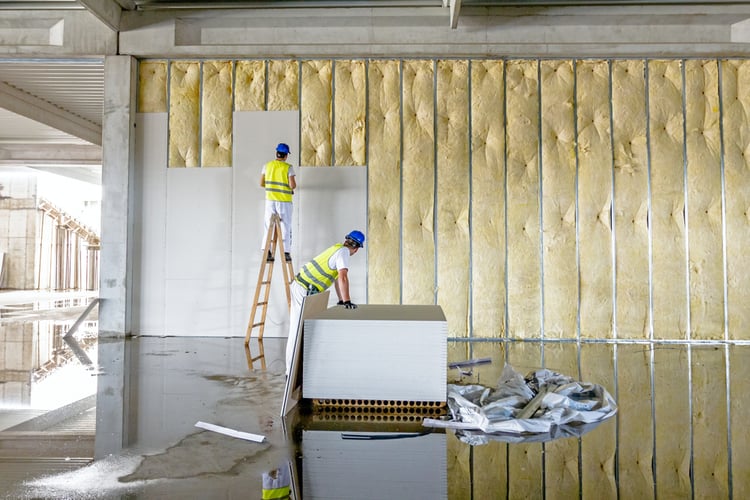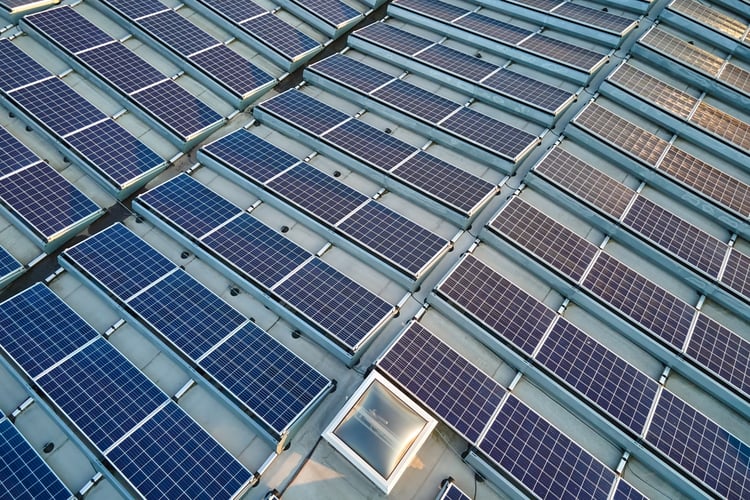Building Retrofits: Why the Order of Energy Upgrades Is Important

Energy efficiency measures for a building are often managed as separate projects. A building owner may upgrade to LED lighting one year, and then install variable frequency drives on all motors the next year. However, this approach has a major disadvantage: Owners often miss the opportunity to achieve synergy between building upgrades, missing out on potential savings.
- As a quick example, assume a building owner replaces all HVAC equipment with new units of higher efficiency, but the same nameplate capacity.
- An energy audit at a later date reveals that the building envelope has deficient insulation and multiple air leaks. The heating and cooling load is drastically reduced after fixing these issues.
- Unfortunately, the new HVAC units have already been installed for the previous load, which means they are now oversized.
In this case, fixing the building envelope issues first would be the optimal approach. The new HVAC equipment can be purchased with a higher efficiency and lower capacity, saving on both equipment purchases and operating costs.
Get a professional energy audit and find out how to reduce your electricity and gas bills.
Property owners can achieve better results with energy efficiency upgrades by following a “whole-building” approach. A professional energy audit can reveal the best opportunities for savings, and MEP engineers can then use energy modeling software to find the optimal combination of upgrades. Here we will discuss why the order of building upgrades is important.
Building Envelope and LED Lighting Upgrades Reduce HVAC Loads

If you improve the insulation level and air-tightness of a building, both space heating and air conditioning loads are reduced. A high-performance building envelope reduces heat transfer in both directions - into and out of the building.
- During summer, an efficient building envelope reduces heat gain. All the BTUs of heat that are kept outside are subtracted from the air conditioning load.
- The opposite happens during winter: an efficient envelope keeps more heat inside the building. In this case, all the BTUs conserved are subtracted from the space heating load.
LEDs emit less heat than the lamps they replace, which means they also reduce cooling loads during summer. For every 32W fluorescent fixture replaced with an equivalent 18W LED tube, 14 watts of heat are subtracted from the cooling load. Assuming you upgrade 6,000 of these lamps in a large commercial building, the total heat emission of the lighting system is reduced by around 84 kW. This represents heat that must no longer be removed by the air conditioning system.
An LED upgrade also causes a slight increase in space heating load during winter, since the heat emission of the lighting system is now less. However, the electricity savings achieved are much higher than the extra heating costs.
- At an electricity price of 20 cents/kWh, a load reduction of 84 kW results in savings of around $16.80 per hour
- Assuming the same kWh price, an efficient heat pump system can deliver those 84 kW of missing heat for less than $7 per hour.
In this simplified example, the net energy savings are still around $10 per hour, even when considering the extra heating cost.
Onsite Generation Requirements Decrease with Building Upgrades that Save Electricity

If you plan to install an onsite generation system for a building, the required capacity can be reduced by focusing on electricity savings first. For example, if your building uses 240,000 kWh per year, you could install a commercial solar system designed for that output. This would reduce your net consumption from the grid to zero, but there is a better approach:
- Assume your electricity consumption can be to 160,000 kWh/year (33% less) thanks to energy efficiency measures.
- In this case, the required capacity of the solar array is also decreased by 33%.
Reducing electricity consumption after going solar is also possible, but then you could end up with an oversized PV array. This is not a problem if your electricity provider gives credit for generation above your consumption, but this benefit is rarely available. Electric companies normally give you credit for solar power exported to the grid, but limited up to your monthly consumption - no net metering credit above that point.
Multiple energy upgrades can be combined into a building retrofit project. Depending on where the property is located, owners may qualify for financial incentives such as grants and low-interest loans. NY Engineers can offer you an ASHRAE Level 2 energy audit, and then design a building retrofit project with an optimal combination of energy efficiency measures.

Michael Tobias
Michael Tobias, the Founding Principal of NY Engineers, currently leads a team of 50+ MEP/FP engineers and has led over 1,000 projects in the US
Join 15,000+ Fellow Architects and Contractors
Get expert engineering tips straight to your inbox. Subscribe to the NY Engineers Blog below.



